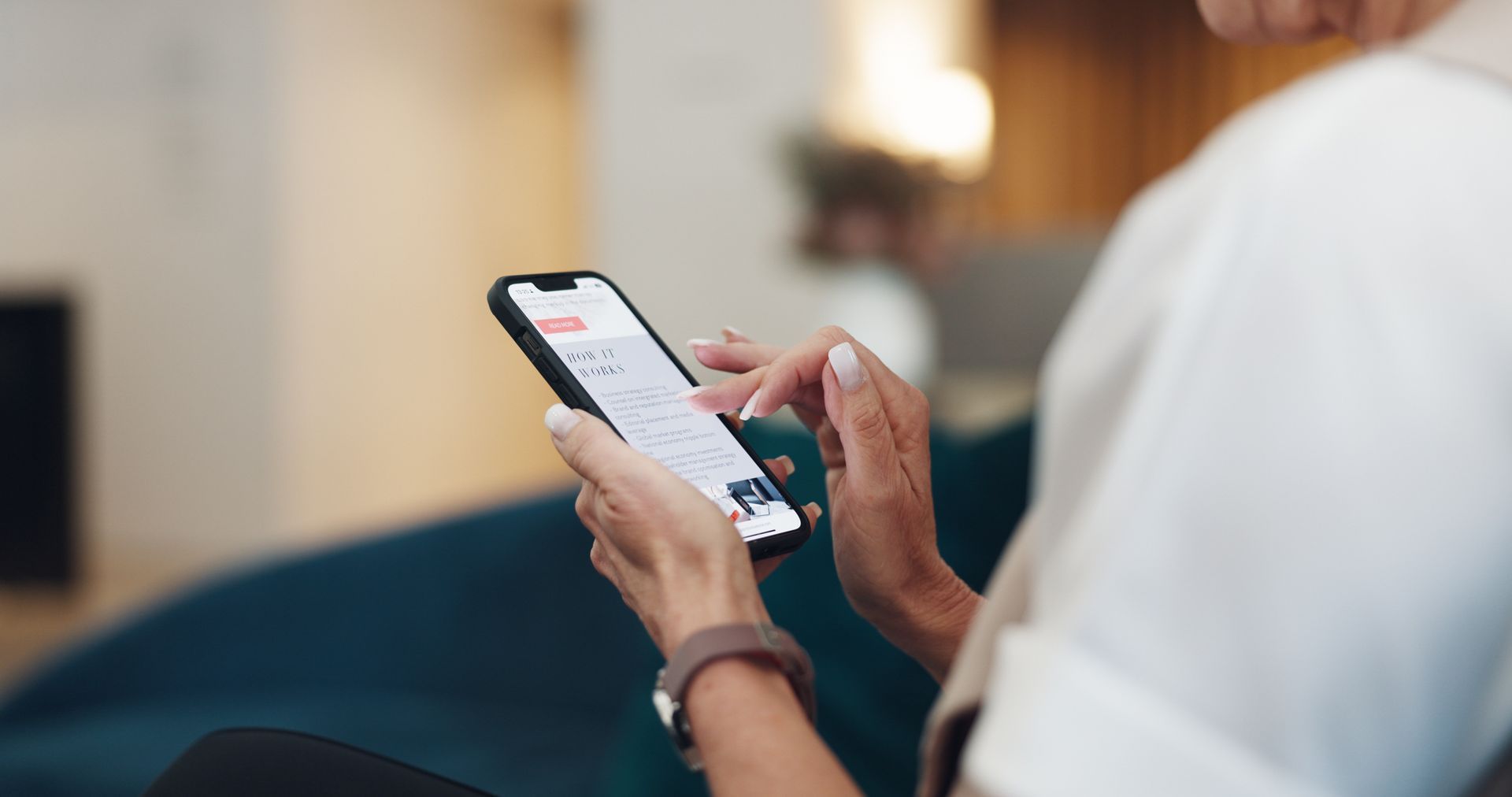8 Branding Tips to Elevate Your Marketing Efforts
Branding is your identity, everywhere.
If your business is a cell, your brand identity is your mitochondria. The powerhouse of your marketing. The reason your company breathes. The thing that sets you apart. The ‘why’ that your customers buy into.
Yes, we know what you’re thinking. If you’re here and asking questions, then this probably seems a little bit overwhelming. You might be looking at the bigger brands and wondering how they managed to get such distinctive messaging. Realistically, all of those brands started off exactly like you: with an idea in their heads and only a vague idea about how to market it. Luckily, at
Infoserve, we are experts at taking a holistic approach to SMB marketing, and we know exactly how to help you position yourselves amongst your competitors with distinctive, but effective, branding.
What is branding?
Your brand is the personality of your business.
It consists of key identifiers including brand colours, messaging, values, graphics guidelines, logos, and other elements that determine who you are at your core.
It is the combination of applied research, audience understanding, market positioning, and various other tested processes, cultivated into one big pack that says ‘this is who we are.’
Branding is your identity, everywhere:
It is consistent across all of your marketing material. Online, in person, offline. It is inseparable from your business.
Why is branding important?
Branding sets you apart from your competitors.
It’s what makes you memorable.
To explain the importance of branding, let’s talk about a couple of examples of truly remarkable branding in big companies:
- Hoover, whose branding was so effective that we now refer to vacuum cleaner products by their name.
- Innocent, who took the playful persona to the extreme and are now recognised for completely changing the way we see branding. But the thing that truly stands out is their authenticity, their humour, and their wacky charity events that encourage customer participation.
These are brands that are trusted, and their branding is responsible for that. They knew how to connect with their audience, how to market themselves in just the right way to stick in consumers’ minds whilst staying true to who they are.
The crux of branding is this: it looks at your audience and asks who they want to invest in.
And that’s exactly why it is so important. It creates an archetypal persona that resonates with your audience and carries across the brand and remains consistent.
Think of branding this way:
When stitching your brand identity together, don’t think of yourself as an online corporation. Think of yourself as the smallest business on the high street, run by a single employee.
Who is that person?
Think about all the reasons why loyal customers want to go back to that business. Not for the product, but for the personality and service that only that business owner provides.
Who is that business owner? What do they offer?
Picture a small dry cleaning business.
Like any other dry cleaning business, they offer exceptional cleaning with fast turnaround and are careful with the delicate clothing left in their care.
But, more importantly, they’re personable. They’re local. They know who you are and why your clothing is so important to you. They have a laugh with you at the counter. They’re warm and considerate. They’re not regal or stuffy. Their shopfront is humble, but tidy. They hum while they work, and take pride in not being flashy because being dependable is far more important.
That’s their brand.
No matter how big the company grows, that will remain their brand.

10 Branding Tips
1. Know your story from every angle
One of the greatest follies in branding is the vague attempt to create something completely new from scratch.
Many people say they don’t know where to start with branding because it feels like such a big ask. When really, you already have the bones of your brand right where you stand.
It’s who you are. It’s who your audience is.
That’s where you start.
Good storytelling always sits at the heart of good branding. And every business has a story. So use it.
Write down the following pieces of information about your company:
- Why did you start the business? For example, a small tea retailer began from a kitchen when you discovered how many flavourings are in shop bought tea, and you wanted to change that. You love tea and wanted to make authentic home brews that are healthy, organic, and honest.
- Why is this company important to you? Why did you choose to sell this item or service? Is it a family business? Do you have a passion for the product? Do you care about the issues of your customer base? Do you relate to your customer base? Is training craftsmen at the heart of your process?
- How have you grown? Since starting your business, how far have you come? What has changed and what hasn’t changed?
- Who is your team? Are you local heroes? Are you a group of misfit individuals who wanted to begin a business? Are you phenomenal craftsmen? Do you all share the same sense of humour? How have your values seeped into the business? Are you neurodivergent? Do you work in a unique way?
- Where do you come from? This is not always vital to branding, but for local businesses, having a local image can be an important part of your brand identity.
- What are your values? We’ll dive into this later.
2. Find your brand archetype
Brand archetypes are a concept coined by Carl Jung who theorised that humans use symbolism to place people into categories. This helps us understand those people.
From this, he created twelve brand archetypes that help companies define their personality and their audience.
These are:
The Innocent: The Innocent represents traits of goodness, safety, optimism and youth.
The Everyman: The Everyman seeks a position of belonging and connection. They are loyal, down to earth, supportive, warm, and uplifting.
Infoserve ourselves champion this archetype.
The Hero: The hero seeks a better world, and they want to make it happen. They are inspirational and bold.
The Outlaw: The Outlaw breaks the rules. They look outside the lines. They’re not afraid to step on toes or be seen as rebellious or different.
The Explorer: The Explorer craves risk, discovery and adventure. Think
Jeep or
Red Bull. Outdoor and adventure brands often sit within this archetype.
The Creator: The Creator is as the Creator sounds; inventive, full of imagination, inspiring a sense of belonging and newness. In marketing,
Adobe is a stand out example of this. In general life,
Lego.
The Ruler: Prestige and status are key personality traits of this archetype. There is often a sense of power in their branding, of exclusivity, sophistication, or a demand for respect -
Rolex,
Jaguar, Hugo Boss.
The Magician: The Magician wants to make dreams come true. They are seen as visionaries, forward thinking and future led. Yes,
Disney does sit comfortably within this archetype, as does
Apple and a number of other entertainment brands.
The Lover: The Lover inspires moments of desire and devotion. Their marketing is often intimate and close, with the senses sitting at the heart of their marketing strategy. Think of food brands like
Galaxy or
M&S. Many luxury brands like cosmetics fall into the Lover category.
The Caregiver: The Caregiver represents compassion and nurturing. They are a figure of security, offering protection and support across their products and their service.
The Jester: As implied, the Jester finds connection through humour. As brands, they are entertainers, mischievous and joyful at their core. As mentioned previously in this blog,
Innocent Smoothies is a prime example of the Jester at work.
The Sage: The sage is a balm, acting as an advisor in a world of chaos. They embody wisdom and value knowledge.
When you decide on your brand archetype, you’ll find it far easier to create your brand image.

3. Know your brand positioning
Brand positioning defines how and why a brand is different from its competitors. It is where you position yourselves within the existing market.
It’s the deliberate effort to influence consumer perception so your brand occupies a specific, meaningful, and differentiated place in their minds.
Creating a strong brand position involves strategic research and creative thinking. It can be one of the most difficult elements of developing a brand. But, we recommend you start by defining a few core elements:
- Target Audience: Who are you speaking to? Understanding your ideal customer is the foundation.
- Market Category: What space are you operating in? Are you a budget friendly service, a luxury provider, or something else?
- Unique Selling Points (USPs): What do you offer that no one else can?
- Brand Promise: What can customers consistently expect from your brand?
- Reason to Believe: What proof or support backs up your claims? (e.g., testimonials, awards, guarantees)
When it comes to branding, you don’t need to be different, but you do need to be distinctive.
4. Clearly define your values
Every brand should have clearly outlined values, and they should shine through in your branding.
It might seem obvious, but there is no point positioning yourself as the Ruler archetype if your values are compassion and security; you’d end up with a very disjointed image. Everything must align and begin with your values.
You should have 3-5 brand values that are written clearly in your brand guidelines. They shouldn’t contain any verbal fluff, but should be phrased with your tone. Every member of your business should know and champion these values so you present a united image to your customers.
We recommend writing them out in the following format:
1. [Your Value]
[How this value is reflected in your operations.]
2. [Your Value]
[How this value is reflected in your operations.]
3. [Your Value]
[How this value is reflected in your operations.]
For example:
1. Sitting Sustainably: Today, Tomorrow, Together.
We are committed to creating a more sustainable world in every corner of our business. From the manufacturing of our products to delivery and service, we put the planet first at every stage. As we grow, we will never put profit above our eco-conscious ethics. Our team continues to undergo sustainability training to ensure we uphold this intrinsic standard every day.
Once you have your values, you can continue to refine them to reflect the language of your business.
5. Connect with your customers
You customers are everything to your brand. Your brand should be formulated for their benefit.
The whole point of a brand identity is to connect with your audience. To build trust, familiarity, and awareness. How could you possibly do this if you don’t consult your customers? If you don’t know who they are or what they want.
Imagine making a cake for your friends and not stopping to consider whether they like the flavours you’ve chosen. Or worse, putting a cake in front of a gluten intolerant customer and then saying ‘well I didn’t know you had celiac disease?’ You wouldn’t. You’d make sure they didn’t have any allergies before you started baking and then make a cake using gluten free flour.
So, why would you market your company to an audience without first knowing what it is they want?
To discover exactly how to click with your customers, take a look at our tips on
How to Define Your Target Audience.

6. Refine your messaging
Your messaging outlines the voice of your brand, and generally consists of two key elements:
1. Your Primary Message
Your primary message is the core message of your brand. It should be short, memorable and concise. Think of it as a slogan; an overarching phrase that encapsulates the most important value of your brand. For example, Tesco’s ‘Every Little Helps’.
Your primary message should have supporting text of 1-2 sentences that explains the message. The message shouldn’t make sense without the context of your business.
2. Your Secondary Messages
Secondary messages provide supporting context to reinforce your primary message. They take your unique selling points and spin them into wording that sits seamlessly beside your brand voice. For example, ‘Moving Your Business Into The Future’, to represent the selling point: ‘Innovation’.
You should have 4-6 secondary messages that consist of a heading and supporting text.
Top Tip: Don’t be afraid of getting out a big piece of paper and some felt tip pens to brainstorm ideas. This can be a really great way of linking initial thoughts together to create something more cohesive.
Get all your ideas down on paper. When you don’t know where to start, begin by piecing together all the initial messy thoughts. You can refine it from there.
7. Research colour psychology
Colour psychology is an often overlooked but crucial area of branding.
You might be thinking that colour is never overlooked in branding; it’s the centre of everything, the first thing any company chooses in their branding.
And yes, that’s partly true. The crux of the problem lies in the simple fact that many brands choose colours based on what they like. On what they think looks good. Not on what will resonate most with their customer.
In order to choose your brand colours, you need to know:
- Your values
- Colour positioning within your company sector
- Your brand archetype
- The colours of your competitors: How colour psychology influences user behaviour
- The fundamentals of colour psychology
- How colour tone will impact your identity
It’s a careful balance between what looks good, and what resonates with your audience.
8. Refine your visual identity
Visual identity encompasses a wide range of visual elements beyond your brand colours and your logo.
There are a multitude of considerations that form your aesthetic as a whole, including:
- Typeface
- Spacing
- Line weight
- Graphic style (curved edges, soft lines, sharp lines, formatting)
- Imagery
And this is just the start. Every single visual element that you use across your website, social media, print marketing, paid ads, TV ads, and even in your staff guidelines, should be carefully considered and consistent.
Serif and sans serif fonts aren’t chosen only for their visual appeal, or because someone liked them. A serif font with soft edges and flicks might be chosen for a jewellery brand because it gives the illusion of sophistication, of class, of approachability. The graphics chosen would then have soft corners to match this style.
Every visual element has its place.
A flower doesn’t look pretty for the sake of it. Each colour, each petal shape, each curve on the leaves has been honed over millions of years to have a vital purpose. Without one of these things, the flower would not attract vital pollinators.
The same applies to visual branding and design. If one element is off kilter, it can have a knock on effect on the rest of your brand.
Not Sure Where to Start?
At Infoserve, we know branding. We also know how difficult it can be to find your brand identity when you’re an SMB with plenty of other things to occupy your mind. Branding is difficult, and that’s why we are only too happy to help you define who you are with expert Branding services, Website Design, and Copywriting.
We will conduct an in depth call to determine who you are so we can sculpt your branding around your existing values and structure. Get in touch today to discover what we can do for your business.













